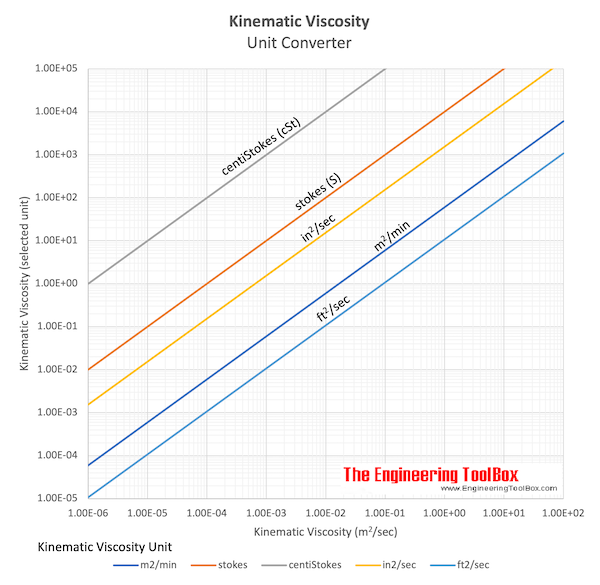

On the other hand, if you try the same thing with and oil, it will run through a portion of the bearing and then run out having never covered the entire surface. If you pump a grease through the zerk at a fixed rate, you can eventually fill the entire bearing space with grease. It take much, much more flow from the pump for low KV fluids to get sufficient flow to the distant outlets if the resistance at individual outlets is not adjusted for the difference in viscosity.Ģ) You can see a similar phenomenon when adding lubricant to loose bearing (like some farm equipment). A high KV fluid will flow to every outlet while a low KV fluid will take the path of least resistance resulting in insufficient flow at the more distant outlets. For each solvent, I have had to dramatically alter the resistance at each outlet based on the KV of the solvent. It seems inaccurate to suggest that an oil should be considered a grade different than the KV suggests because the HTHSV is outside of the typical range for that grade.Īm I missing something here? Is it impossible for the ratio of HTHSV to KV to get to the point where too much oil is diverted through paths of less resistance to flow?ġ) I have build a few drip systems for doing extractions across columns. So, it seems to me that HTHSV is very important, but that KV should not be ignored. The assumption is that most of the oil flow does not pass through the tightest bearings. However, the tightest bearings could have dramatically higher flow rates. On the other hand, for two oils of equal KV, but different HTHSV, the overall pattern of oil flow is more likely to be very similar between the oils. Therefore, I would think that both KV and HTHSV have be balanced for a particular lubrication circuit. The low KV fluid would cool some areas better due to this behavior, but would cool other areas poorer.

Although the HTHSV is the same, the lower KV fluid has greater flow rates in wide-clearance paths. The low KV oil would therefore have higher residence time in tight clearance areas and would not cool those surfaces as well. Given two fluids with the same HTHSV but with different KV, I would think that more of the low KV oil would be diverted through paths of lower resistance to flow as compared to the high KV oil. However, it seems that the lubrication system is a system and that HTHSV can influence the overall pattern of fluid flow through the entire system. Again, I would like to avoid an argument about this point.įrom the point of view of a tight-clearance lubricated surface, HTHSV seems to be an appropriate consideration of how a fluid behaves. I recognize that some will suggest that OEM recommendations should be the primary factor, but I am trying to keep the discussion to those of us that consider additional factors beyond the OEM recommendations due to rarer applications or motivations. Lately, I have read a lot of posts that suggest that HTHSV is the primary measurement that should be considered when deciding on a viscosity. ASTM D4683, CEC-L-36-A-90 (ASTM D4741) or ASTM D5481.I want to preface my question by stating that I would like to learn something as opposed to starting an argument. Test Method for Kinematic Viscosity of Transparent and Opaque Liquids A Test Method for Determination of Yield Stress and Apparent Viscosity of Engine Oils at Low Temperature CCS or Cold Cranking Simulator, A Test Method for Apparent Viscosity of Engine Oils and Base Stocks Between –10 ☌ and –35 ☌ (For 15W, 20W, and SAE 40 HTHS limit is 3.7 instead of 2.9) References: (For 0W, 5W, and 10W, HTHS limit is 2.9 cSt.) SAE J300 Viscosity table, SAE J300 Viscosity chart shown above is January 2015 revision. High viscosity thicker oils have strong film strength to protect metal to metal contact during high temperature and heavy load. Thin oils are easy to pump and help start engines quickly during cold weather. Lower viscosity or thin oils flow more easily at low temperatures than thicker oils that have a higher viscosity. See SAE J300 viscosity table below.Įngine oil viscosity refers to how easily oil flows or pours at a specified temperature. The Society of Automotive Engineers (SAE) developed a scale for viscosity for both engine oil (SAE J300) and transmission oils (SAE J306). Use only manufacturer recommended oil viscosity grades for your vehicles. January 2015 revision SAE J300 viscosity chart now includes two new viscosity standards SAE 12 and SAE 8. Engine lubricants must meet viscosity requirements that are established by a number of organizations along with major equipment manufacturers. Viscosity plays a predominant role in the selection of lubricants for engines.


 0 kommentar(er)
0 kommentar(er)
